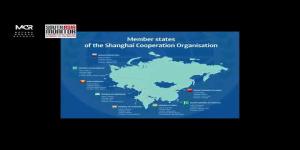The crew and passengers of ships arriving from China or certain other South-East Asian countries have been barred from entering Mumbai port as a precautionary measure to prevent the spread of novel coronavirus.

Is A India–China War Possible? A Fragile Peace Will More Likely Hold
While low-level clashes may continue, the possibility of a large-scale conflict, as projected by recent U.S. intelligence reports, remains far-fetched. Both countries are acutely aware that they stand to lose far more than they can gain. Despite uneasy relations, several factors actively discourage conflict
China's Reactions To Terror Incidents: State And Social Media Echo Clear Bias For Pakistan
The two incidents in India and Pakistan over the course of a week have shown that the coverage of terrorism by the Chinese media ecosystem largely reinforces the state’s foreign policy narratives and preferences for alignment in South Asia. Pakistan emerges as a clear preference for the public, which is reinforced by commentators and opinion makers on non-state news media platforms.
China’s CPEC Extension To Afghanistan Has Security Implications For Region
CPEC 2.0 is expected to serve as a major leverage tool for China to access Afghanistan’s untapped natural resources and enhance connectivity to Pakistan and Central Asia. However, for Afghanistan, the initiative may be more of a challenge than an opportunity. Countries such as Sri Lanka and the Maldives have already faced severe economic consequences from poorly structured Chinese-funded projects.
China's New Great Game: How Beijing is Redrawing South Asian Geopolitics
China's rise has, in the consensus view of most international relations scholars, fundamentally changed South Asia. The old, India-centric region is gone. Pakistan has tied its future to Beijing, seeing China as its ultimate guarantor. Bangladesh has played a smart game, using Chinese money for national development while maintaining its "friendship-to-all" foreign policy. The Teesta project shows Dhaka's new confidence in following its own national interest. For India, the challenge is immense, as it must now compete for influence in its own backyard.
Chinese ships' crew, passengers barred from Mumbai port
SriLankan Airlines slashes flights to China
SriLankan Airlines is rationalizing its services to China in accordance with current market conditions as per its long-held commercial policies, with a temporary reduction of frequencies to several cities, the airline said
Coronavirus and the Wuhan spirit: India could have done more than just evacuation
India, in 1938, was the first Asian country from where real help came for China. Today, India is the first Asian country to evacuate its citizens from China, writes Rajendra Shende for South Asia Monitor
India completes evacuation of nationals from Wuhan
India's evacuation of its nationals who were stranded in China's Wuhan, the epicentre of the novel coronavirus epidemic, was completed on Sunday with around 650 people brought back in two phases
India suspends e-visa entry from China
The Indian government temporarily banned the e-visa entry of Chinese and other foreign nationals into India in view of the novel coronavirus outbreak in Wuhan
Pakistan, Maldives suspend flight operations to and from China as South Asia remains on high alert
Pakistan and Maldives halted flight operations to and from China after the death toll in the country climbed to more than 200 and the first coronavirus positive case was reported in India
No clearance for Sri Lanka to evacuate students in Wuhan
Sri Lanka has not yet received clearance to evacuate Sri Lankan students in Wuhan city, the Prime Minister’s Office said.
China keenly follows India's citizenship debate, Northeast ferment
The debate over the Indian Citizenship Amendment Bill, 2019, or CAB, has been widely reported in the Chinese media, from the time the Bill was tabled in the Lok Sabha December 9 until December 12, when it was signed into law by the President Ram Nath Kovind, after the CAB was passed through both houses of parliament
Beijing optimistic about rebuilding ties with Colombo: A media analysis
The recently-concluded elections in Sri Lanka was widely covered in the Chinese media, an indication of the strategic interest of Beijing in the island nation and the Indian Ocean Region




















